Volume 11, Issue 1
Displaying 1-12 of 12 articles from this issue
- |<
- <
- 1
- >
- >|
-
1999 Volume 11 Issue 1 Pages 1-12
Published: April 20, 1999
Released on J-STAGE: August 06, 2010
Download PDF (1501K) -
1999 Volume 11 Issue 1 Pages 13-17
Published: April 20, 1999
Released on J-STAGE: August 06, 2010
Download PDF (1369K) -
1999 Volume 11 Issue 1 Pages 18-23
Published: April 20, 1999
Released on J-STAGE: August 06, 2010
Download PDF (1880K) -
1999 Volume 11 Issue 1 Pages 24-29
Published: April 20, 1999
Released on J-STAGE: August 06, 2010
Download PDF (1960K) -
1999 Volume 11 Issue 1 Pages 30-35
Published: April 20, 1999
Released on J-STAGE: August 06, 2010
Download PDF (2356K) -
1999 Volume 11 Issue 1 Pages 36-41
Published: April 20, 1999
Released on J-STAGE: August 06, 2010
Download PDF (2032K) -
1999 Volume 11 Issue 1 Pages 45-46
Published: April 20, 1999
Released on J-STAGE: August 06, 2010
Download PDF (252K) -
1999 Volume 11 Issue 1 Pages 47-51
Published: April 20, 1999
Released on J-STAGE: August 06, 2010
Download PDF (997K) -
1999 Volume 11 Issue 1 Pages 52-67
Published: April 20, 1999
Released on J-STAGE: August 06, 2010
Download PDF (2923K) -
1999 Volume 11 Issue 1 Pages 68-83
Published: April 20, 1999
Released on J-STAGE: August 06, 2010
Download PDF (3138K) -
1999 Volume 11 Issue 1 Pages 84-99
Published: April 20, 1999
Released on J-STAGE: August 06, 2010
Download PDF (3053K) -
1999 Volume 11 Issue 1 Pages 100-111
Published: April 20, 1999
Released on J-STAGE: August 06, 2010
Download PDF (2174K)
- |<
- <
- 1
- >
- >|
